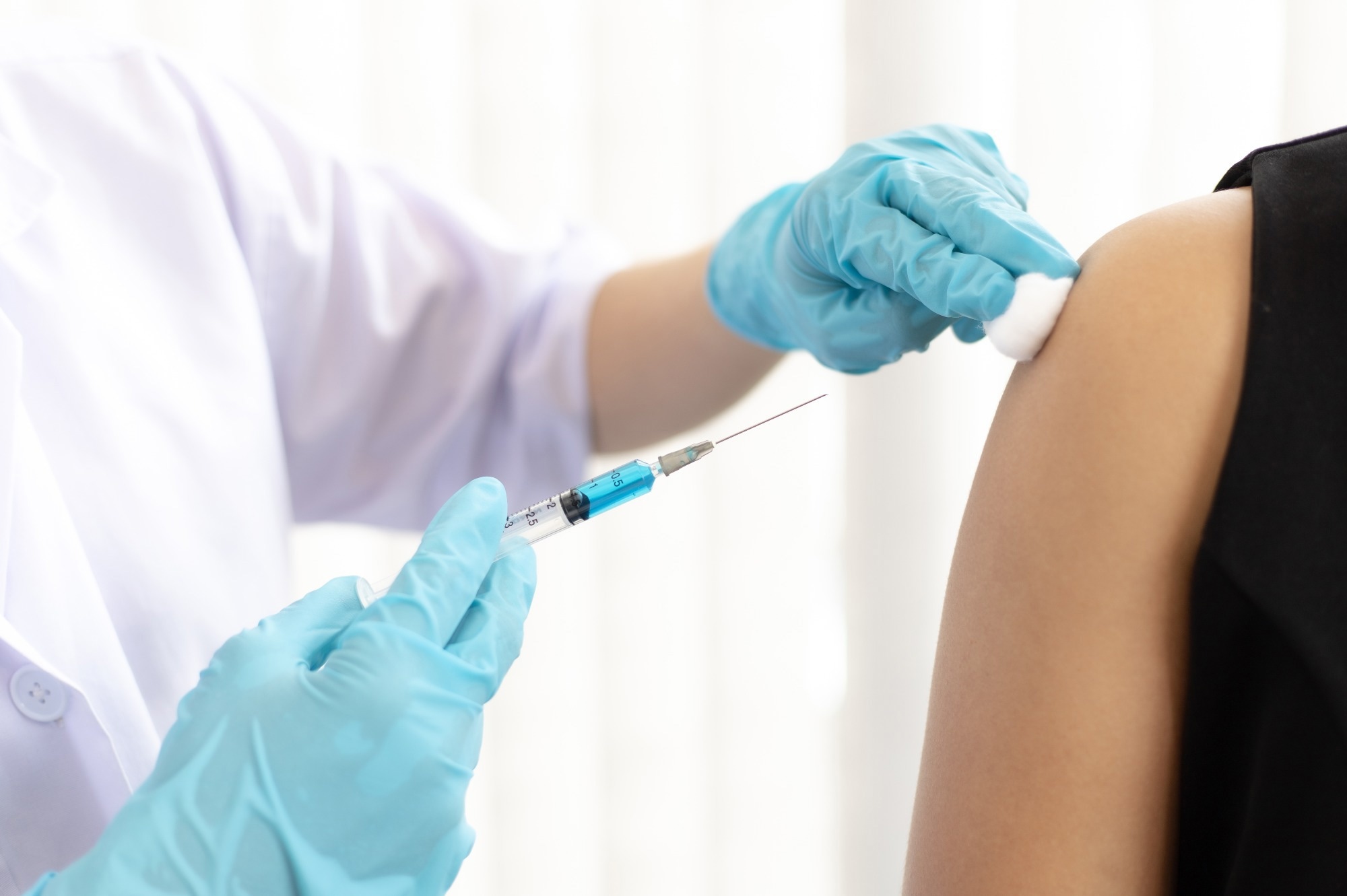Every year, millions of individuals are infected by the seasonal influenza virus, which results in hundreds of thousands of deaths worldwide. Vaccination is an effective approach used to prevent influenza infection.
Influenza vaccines are developed using hemagglutinin (HA), a surface antigen of the virus that induces an immune response. A recent Npj Vaccines study evaluates the efficacy of a quadrivalent messenger ribonucleic acid (mRNA) vaccine encoding HA from four seasonal influenza strains.
 Study: Seasonal quadrivalent mRNA vaccine prevents and mitigates influenza infection. Image Credit: 89stocker / Shutterstock.com
Study: Seasonal quadrivalent mRNA vaccine prevents and mitigates influenza infection. Image Credit: 89stocker / Shutterstock.com
Importance of influenza vaccination
Influenza is a respiratory infection that manifests in annual epidemics and sporadic pandemics. The four influenza subtypes endemic in humans are A(H1N1), B-Yamagata lineage, A(H3N2), and B-Victoria lineage. This seasonal viral infection causes up to 650,000 deaths annually worldwide.
The first influenza vaccine was developed in the 1940s by harvesting inactivated viruses from the allantoic fluid of embryonated hens' eggs. Currently, three types of influenza vaccines are available in the United States, including live attenuated influenza vaccines (LAIV), inactivated influenza vaccines (IIV), and recombinant HA protein subunit vaccines.
Although HA is highly immunogenic, it undergoes continual antigenic drift; therefore, updating vaccines based on the dominantly circulating influenza virus strain is imperative. Importantly, virus strain selection occurs six months prior to vaccine use, which creates an opportunity for a new variant to emerge and become unexpectedly dominant. A similar incident occurred between 2015 and 2016 during the Northern Hemisphere flu season.
Advantages of mRNA-based influenza vaccine
Although mRNA-based vaccines were being designed and developed for over a decade, the onset of coronavirus disease 2019 (COVID-19) accelerated the development process for its timely clinical use. Since then, millions of people throughout the world have received mRNA-based COVID-19 vaccines that effectively protect them against the severe acute respiratory syndrome coronavirus 2 (SARS-CoV-2), the causal agent of the pandemic.
Compared to conventional IIV and LAIV influenza vaccines, mRNA-based vaccines have many advantages, including their in vitro production process without the use of eggs or cell culture. The mRNA technology also eliminates the risk of viral growth-promoting mutations that might influence antigenicity.
Another advantage of an mRNA-based influenza vaccine is reduced production time compared to other vaccine types. This could be beneficial in reducing the time window between the vaccination program and virus strain selection and manufacturing.
Development and effectiveness of a new quadrivalent influenza mRNA vaccine
The current study evaluated the effectiveness of a quadrivalent mRNA vaccine encoding HA from four seasonal influenza viruses, including A/Hong Kong/4801/2014 (H3N2), B/Phuket/3073/2013 (B-Yamagata lineage), A/California/07/2009 (H1N1), and B/Brisbane/60/2008 (B-Victoria lineage). This vaccine, developed by GreenLight Biosciences (GLB), exhibited significant immunogenicity and protectivity in a mouse model.
The mRNA vaccine was encapsulated in lipid nanoparticles (LPN) developed by Acuitas Therapeutics. The LPN used for mRNA encapsulation consisted of four lipid components, including a saturated phospholipid, a proprietary cationic lipid, cholesterol, and a polyethylene glycol (PEG)-lipid.
The mRNA construction was optimized based on immunogenicity and protective efficacy obtained after altering CA09 HA mRNA vaccines. As compared to unmodified mRNA vaccines, modified mRNA vaccines triggered significantly higher antibody titers.
Similar to that of the COVID-19 mRNA vaccine, the new influenza vaccine used pseudouridine, thus reflecting the safety and efficacy of vaccine components in clinical settings. Monovalent and quadrivalent mRNA was used to assess immune activation at doses of 30 micrograms (μg) of each antigen. This vaccine dosage elicited antibody production against each subtype, which enhanced the vaccine's potency against various influenza strains.
In vivo studies revealed that the quadrivalent mRNA influenza vaccine was well tolerated at a concentration of 120 µg without any adverse effects. This finding indicated that a dose of 40 µg of each strain, which was used to construct quadrivalent mRNA, was sufficient for clinical use.
When the vaccine dose was lowered to a dose of one μg of each component, it induced protection against the A/California/04/2009 challenge. Furthermore, no morbidity was observed at this dose.
A single 10 μg dose of the GLB quadrivalent mRNA vaccine exhibited complete protection in mice subjected to the CA09 challenge. However, antibody titers against the HK14 HA antigens after this dose were low, thus indicating that a larger dose of quadrivalent mRNA may be needed.
Conclusions
The current preclinical study used a mouse model to assess the effectiveness of quadrivalent mRNA influenza vaccines developed by targeting HA from four seasonal influenza subtypes. Robust antibody titers were recorded post-vaccination without any adverse effects. Admixed mRNA-LNP quadrivalent vaccines induced immune responses, even at a very low dose of 1 μg.
More research is needed to understand the effect of mRNA-based quadrivalent influenza vaccination on T-cell responses. Future studies must also determine the kinetics of antibody maintenance following vaccination.
Journal reference:
- Kackos, C. M., DeBeauchamp, J., Davitt, C. J. H., et al. (2023) Seasonal quadrivalent mRNA vaccine prevents and mitigates influenza infection. Npj Vaccines 8(1);1-11. doi:10.1038/s41541-023-00752-5